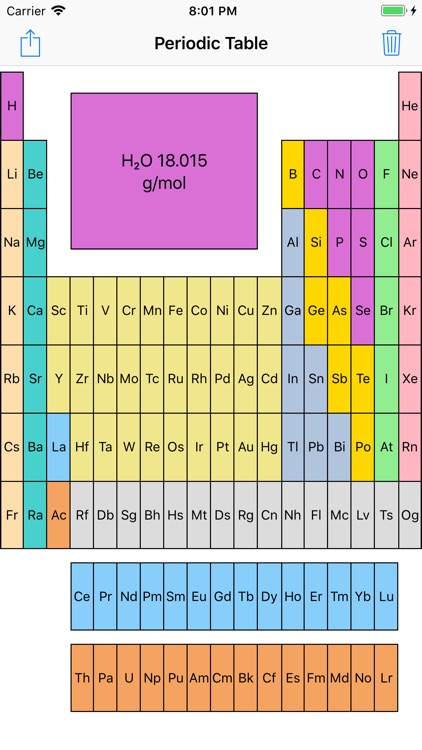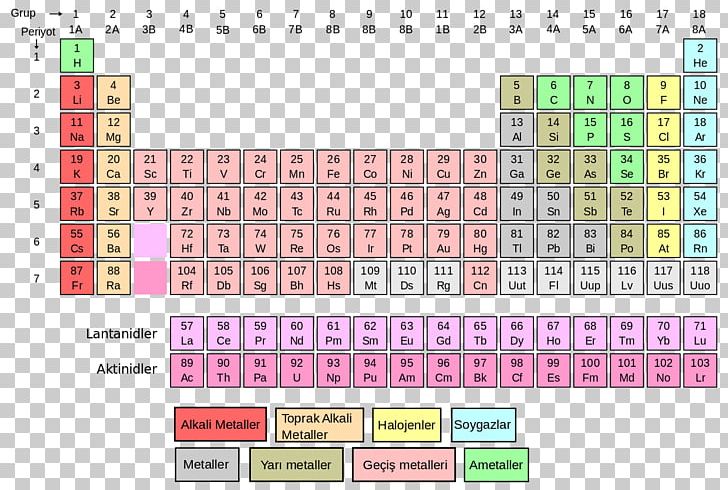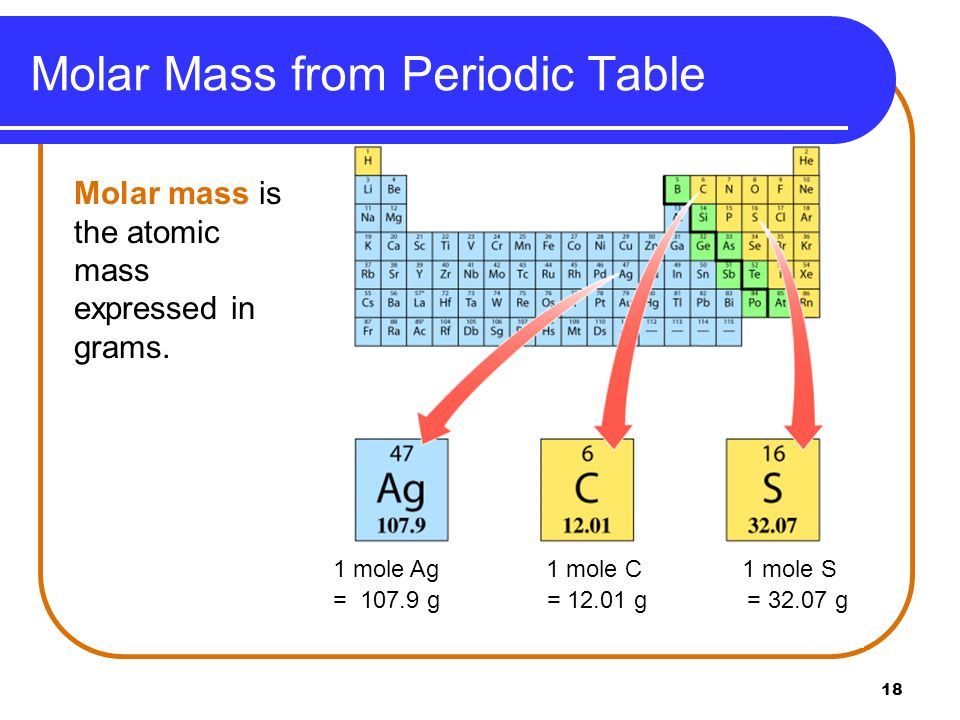
(measured in cubic centimeters per mole):įigure 7.3 Mendeleev’s Periodic Table, as Published in the German Journal Annalen der Chemie und Pharmacie in 1872 This property is equivalent to what is today defined as molar volume The molar mass of an element divided by its density. Meyer aligned the elements in his table according to periodic variations in simple atomic properties, such as “atomic volume” ( Figure 7.2 "Variation of Atomic Volume with Atomic Number, Adapted from Meyer’s Plot of 1870"), which he obtained by dividing the atomic mass (molar mass) in grams per mole by the density of the element in grams per cubic centimeter. In 1869, they independently proposed essentially identical arrangements of the elements. The periodic table achieved its modern form through the work of the German chemist Julius Lothar Meyer (1830–1895) and the Russian chemist Dimitri Mendeleev (1834–1907), both of whom focused on the relationships between atomic mass and various physical and chemical properties. This peculiar relationship I propose to provisionally term the Law of Octaves. Thus, in the nitrogen group, between nitrogen and phosphorus there are 7 elements between phosphorus and arsenic, 14 between arsenic and antimony, 14 and lastly, between antimony and bismuth, 14 also. It will also be seen that the numbers of analogous elements generally differ either by 7 or by some multiple of seven in other words, members of the same group stand to each other in the same relation as the extremities of one or more octaves in music. The table shown here accompanied a letter from a 27-year-old Newlands to the editor of the journal Chemical News in which he wrote: “If the elements are arranged in the order of their equivalents, with a few slight transpositions, as in the accompanying table, it will be observed that elements belonging to the same group usually appear on the same horizontal line.

Despite the fact that Newlands’s table had no logical place for the d-block elements, he was honored for his idea by the Royal Society of London in 1887.įigure 7.1 The Arrangement of the Elements into Octaves as Proposed by Newlands At one scientific meeting, Newlands was asked why he didn’t arrange the elements in alphabetical order instead of by atomic mass, since that would make just as much sense! Actually, Newlands was on the right track-with only a few exceptions, atomic mass does increase with atomic number, and similar properties occur every time a set of ns 2 np 6 subshells is filled. Unfortunately, Newlands’s “law of octaves” did not seem to work for elements heavier than calcium, and his idea was publicly ridiculed. (The noble gases were still unknown.) Newlands therefore suggested that the elements could be classified into octaves A group of seven elements, corresponding to the horizontal rows in the main group elements (not counting the noble gases, which were unknown at the time)., corresponding to the horizontal rows in the main group elements. The English chemist John Newlands (1838–1898), hypothesizing that the chemistry of the elements might be related to their masses, arranged the known elements in order of increasing atomic mass and discovered that every seventh element had similar properties ( Figure 7.1 "The Arrangement of the Elements into Octaves as Proposed by Newlands"). The middle three members of most of the other columns, such as sulfur, selenium, and tellurium in group 16 or aluminum, gallium, and indium in group 13, also have remarkably similar chemistry.īy the mid-19th century, the atomic masses of many of the elements had been determined. We now know that portions of the periodic table-the d block in particular-contain triads of elements with substantial similarities. Dobereiner proposed that all elements could be grouped in such triads, but subsequent attempts to expand his concept were unsuccessful.

One of the first to suggest such an arrangement was the German chemist Johannes Dobereiner (1780–1849), who noticed that many of the known elements could be grouped in triads A set of three elements that have similar properties., sets of three elements that have similar properties-for example, chlorine, bromine, and iodine or copper, silver, and gold.

The modern periodic table has evolved through a long history of attempts by chemists to arrange the elements according to their properties as an aid in predicting chemical behavior.


 0 kommentar(er)
0 kommentar(er)
